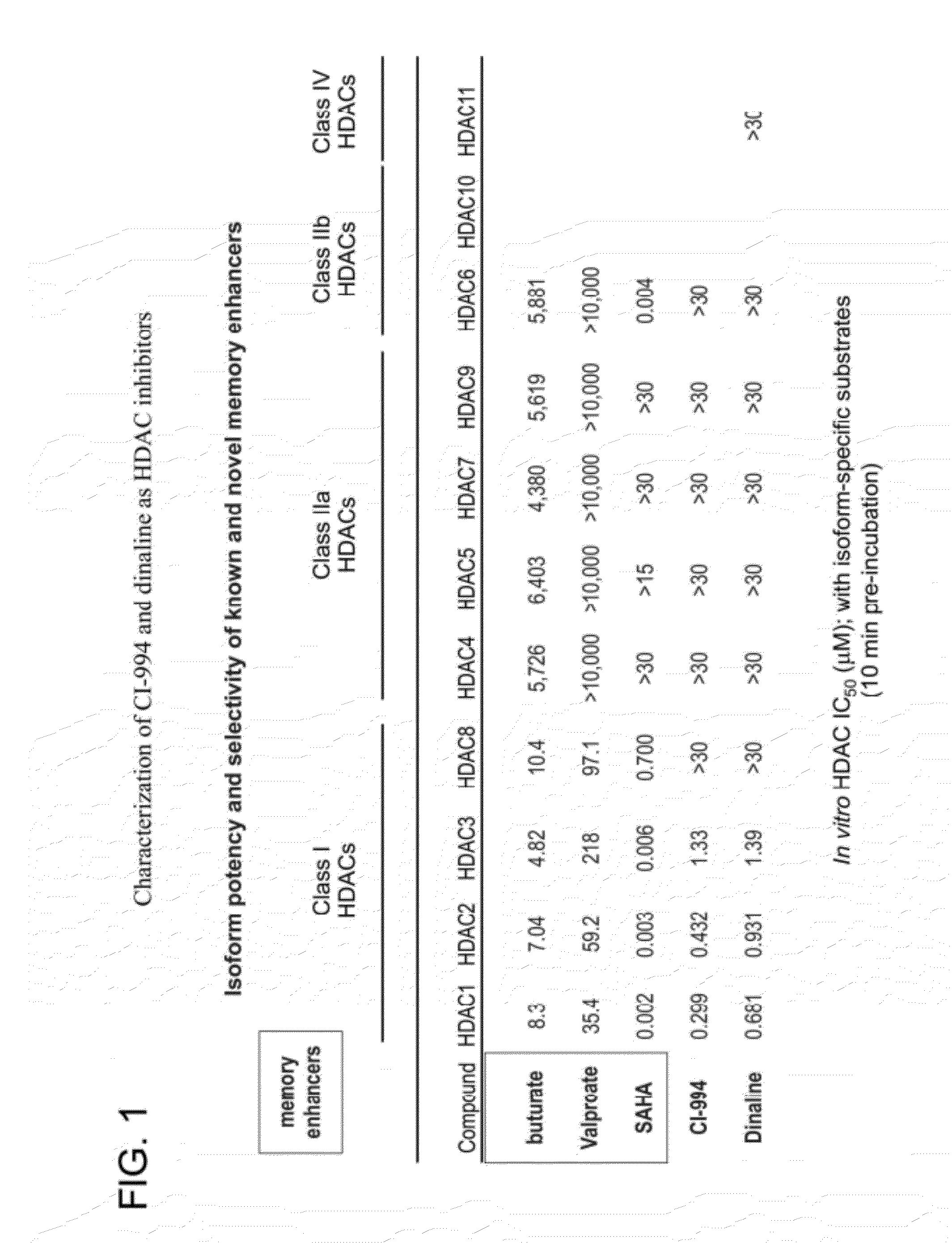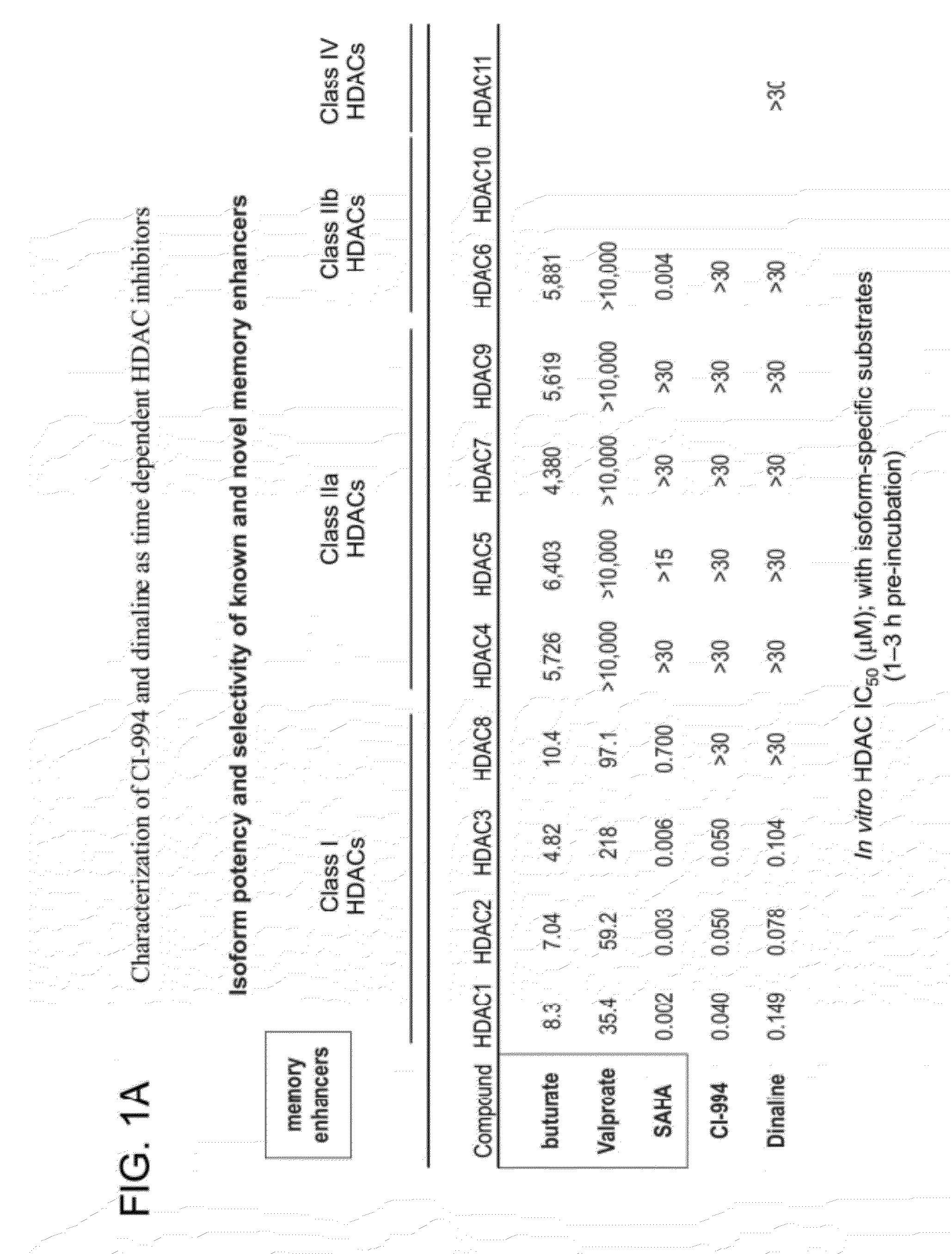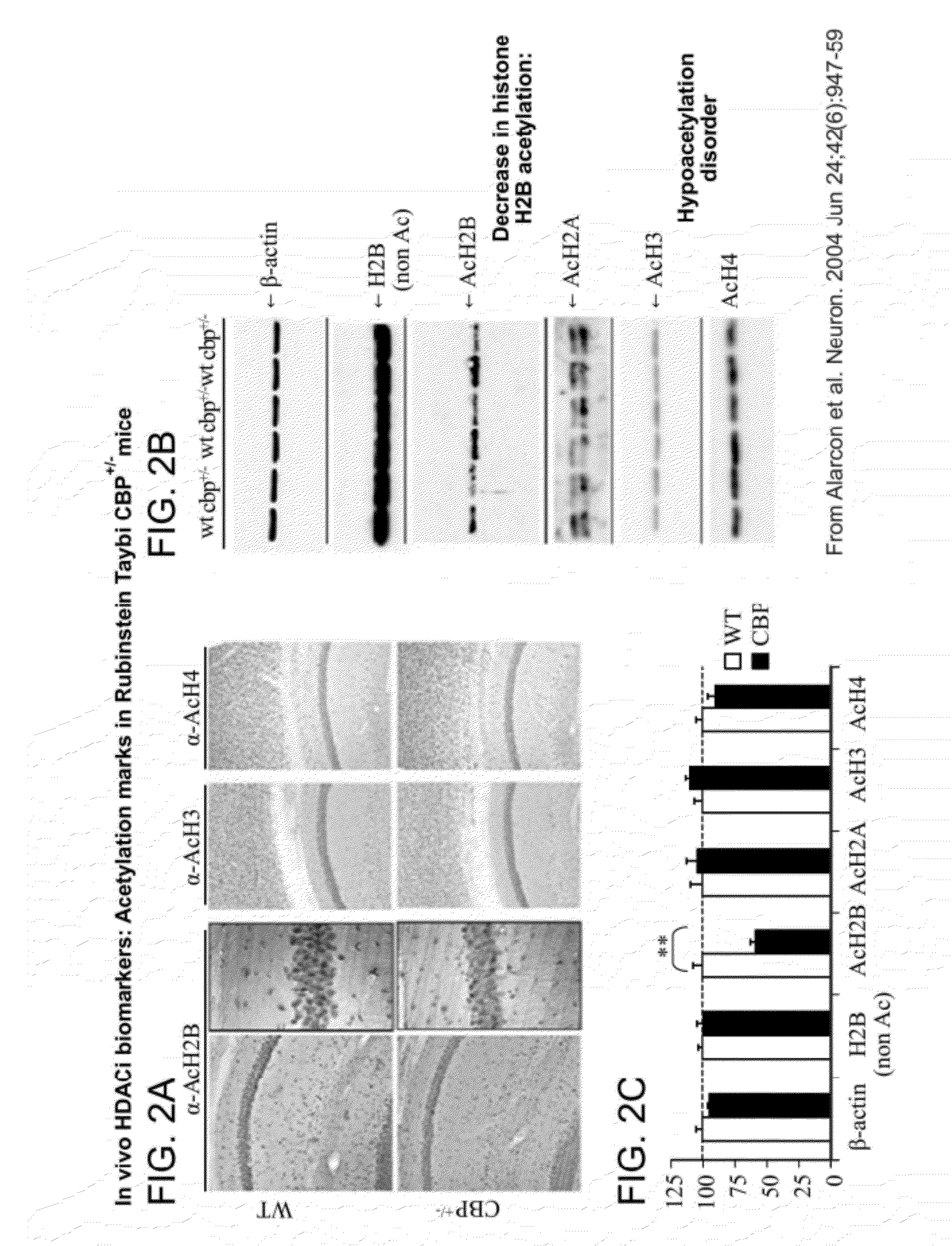Use of ci-994 and dinaline for the treatment of memory/cognition and anxiety disorders
a technology for anxiety disorders and memory, applied in the direction of biocide, amide active ingredients, drug compositions, etc., can solve the problems of unexplored strategies for recovering lost memories, disease is not well understood, and no cure is known for alzheimer's disease and related dementias, etc., to promote fear extinction, maintain a cumulative effective dinaline serum concentration, and improve cognitive function
- Summary
- Abstract
- Description
- Claims
- Application Information
AI Technical Summary
Benefits of technology
Problems solved by technology
Method used
Image
Examples
example 1
Characterization of CI-994 and Dinaline as HDAC Inhibitors
[0170]In vitro binding data: The enzymatic inhibitory activity of CI-994 and dinaline against several of the known HDAC isoforms was assayed. The enzymatic inhibition profile for these two compounds is shown in FIG. 2. Comparison was also made to other known memory enhancers and their ability to inhibit the same HDAC enzymes. Both compounds are primarily Class I HDAC inhibitors.
example 1a
Characterization of CI-994 and Dinaline as Time Dependent HDAC Inhibitors
[0171]In vitro binding data: The enzymatic inhibitory activity of CI-994 and diniline against several of the known HDAC isoforms was assayed with 1-3 h preincubation. The enzymatic inhibition profile for these two compounds is shown in FIG. 1A. Comparison was also made to other known memory enhancers and their ability to inhibit the same HDAC enzymes. Both compounds are primarily Class I HDAC inhibitors.
example 2
Acetylation Marks in Rubinstein Taybi CBP+ / − Mice
[0172]The data of this Example was previously published, but is presented herein to demonstrate the relevance of the specific acetylation mark (H2B) elicited by CI-994 in the brain and how this relates to the treatment of Rubinstein Taybi. The data of Example 2 is not part of the invention.
[0173]Immunostaining of sagittal brain sections of Rubinstein Taybi CBP+ / − mice using antibodies revealed a decreased level of AcH2B in hippocampal neurons (FIG. 2A). Western blot analysis of hippocampal protein extracts from CBP+ / − and WT mice using antibodies against 3-actin, H2B (nonacetylated), AcH2A, AcH3 and AcH4 revealed a similar decrease in AcH2B level (FIG. 2B). Quantification of Western blot analysis showed no differences in the level of 3-actin, total H2B, AcH2A, AcH3, but a significant difference in the level of AcH2B. A similar reduction in H2B acetylation was also observed using another AcH2B antibody (FIG. 2C).
PUM
| Property | Measurement | Unit |
|---|---|---|
| time period | aaaaa | aaaaa |
| % time | aaaaa | aaaaa |
| time | aaaaa | aaaaa |
Abstract
Description
Claims
Application Information
 Login to View More
Login to View More - R&D
- Intellectual Property
- Life Sciences
- Materials
- Tech Scout
- Unparalleled Data Quality
- Higher Quality Content
- 60% Fewer Hallucinations
Browse by: Latest US Patents, China's latest patents, Technical Efficacy Thesaurus, Application Domain, Technology Topic, Popular Technical Reports.
© 2025 PatSnap. All rights reserved.Legal|Privacy policy|Modern Slavery Act Transparency Statement|Sitemap|About US| Contact US: help@patsnap.com



